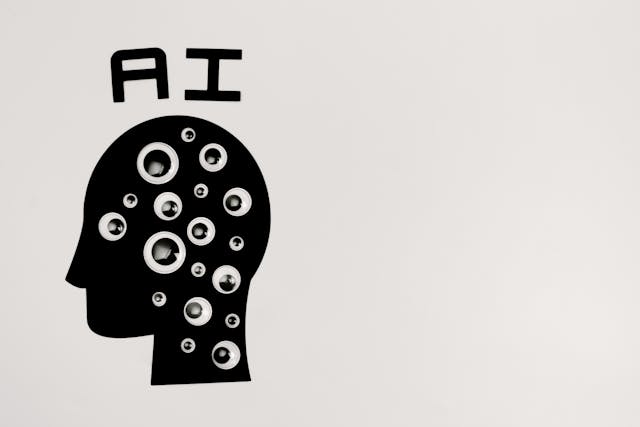
In today's fast-paced digital world, nonprofits must leverage every tool at their disposal to enhance their operations and impact. While content generation is a popular application of AI, there are several other practical, easy-to-implement AI use cases that can significantly benefit nonprofits. By exploring these low-hanging-fruit AI solutions, nonprofits can streamline their operations, enhance donor engagement, and improve data management, all while staying focused on their core mission.
One of the most immediate and impactful ways AI can benefit nonprofits is through workflow automation. Manual data entry, time-consuming reporting processes, and inefficient scheduling can drain valuable time and resources. AI tools like Zapier can automate data synchronization between platforms, reducing the need for manual intervention. For example, entering donor data into multiple systems can be automated, freeing up staff to focus on mission-critical tasks.
Workflow automation also extends to smart reporting with real-time dashboards and intelligent scheduling. By integrating AI into scheduling processes, nonprofits can efficiently coordinate meetings, volunteer shifts, and campaign planning with minimal manual intervention. This not only enhances productivity but also reduces burnout among staff.
Maintaining personalized relationships with donors is crucial for nonprofit success. AI-powered smart document processing can transform how nonprofits handle grant applications, reporting, donor messaging, financial documents, and volunteer onboarding. AI tools can extract key information from documents, generate standardized reports, and automate approval workflows. This streamlines the administrative burden and allows staff to focus on building meaningful connections with donors.
For instance, using AI for donor messaging can ensure personalized communication at scale. Automated workflows can send tailored thank-you emails, notify donors of the impact of their contributions, and keep them engaged with the nonprofit's mission.
Meetings are an essential part of nonprofit operations, but they can often be time-consuming and unproductive. AI tools like Otter.ai and Read.ai can revolutionize meeting productivity by automatically recording and transcribing meetings. These AI tools generate summaries with key points, action items, and decisions, making it easy for everyone to stay on the same page.
By leveraging AI for meeting productivity, nonprofits can ensure that important discussions are accurately documented, and follow-up actions are clearly defined. This leads to better collaboration and more efficient use of time during and after meetings.
Data management is a critical aspect of nonprofit operations, and AI can play a significant role in enhancing data efficiency. AI tools can automate data visualization, predictive modeling, and real-time monitoring of key performance indicators. This allows nonprofits to gain valuable insights from their data and make informed decisions to drive their mission forward.
AI-powered data management tools can also help in smart segmentation of donor data. By analyzing donation history, events, and interaction levels, nonprofits can tailor their outreach efforts more effectively. This ensures that communication is relevant and engaging, leading to better donor retention and increased support.
Providing timely and accurate support to constituents is essential for nonprofits. AI-powered chatbots can enhance constituent support by offering real-time responses to inquiries on digital platforms. Unlike traditional chatbots, the new generation of AI chatbots is conversational and can provide personalized assistance based on the user's needs.
For example, AI chatbots can answer frequently asked questions, provide information about programs and services, and assist with volunteer coordination. This reduces the volume of incoming calls and emails, allowing staff to focus on more complex tasks. Additionally, AI chatbots can support multilingual interactions, making it easier to engage with diverse communities.
Predictive analytics is a powerful AI application that can help nonprofits solve complex issues and enhance decision-making. By analyzing historical data and identifying patterns, AI tools can predict future outcomes and provide actionable insights. This enables nonprofits to proactively address challenges, optimize programs, and allocate resources more effectively.
For instance, predictive analytics can help nonprofits identify potential donors who are likely to contribute, forecast funding needs, and assess the impact of various initiatives. This data-driven approach ensures that nonprofits can make strategic decisions that align with their goals and maximize their impact.
Implementing AI in a nonprofit organization may seem daunting, but with a clear roadmap, it can be a seamless process. Here are some steps to get started:
Define Budget and Objectives: Identify available funds for AI adoption and clarify your goals and expected outcomes. Secure leadership support to ensure a smooth implementation process.
Explore and Compare AI Solutions: Research tools that align with your nonprofit's needs. Evaluate nonprofit-specific options and schedule demos with providers to understand their capabilities.
Adopt Ethical AI Standards: Establish data privacy protocols and ensure inclusive and unbiased implementation. Develop acceptable use policies to guide AI adoption.
Integrate Your Solution: Implement AI tools with minimal disruption to existing systems. Ensure that AI solutions are customized to meet your nonprofit's specific needs.
Equip Your Team with Knowledge: Provide comprehensive training to your team and develop internal champions. Create ongoing learning opportunities to keep everyone up to date with the latest AI advancements.
By following these steps, nonprofits can successfully integrate AI into their operations and leverage its full potential to drive their mission forward.
Ready to take the next step in leveraging AI for your nonprofit? Contact us today to schedule a consultation and discover how our AI solutions can transform your organization.
Tapp Network is a marketing & technology firm serving nonprofits and organizations seeking to accelerate their social impact, capacity building, and revenue growth for good.